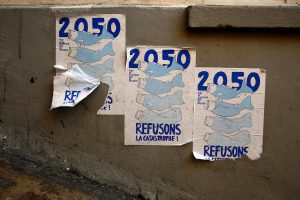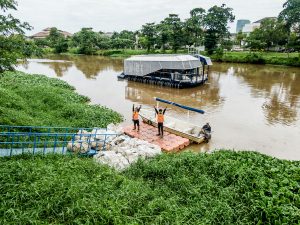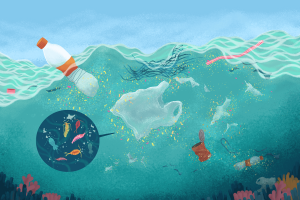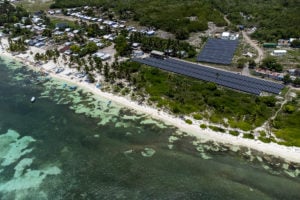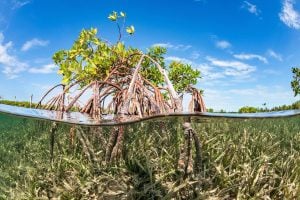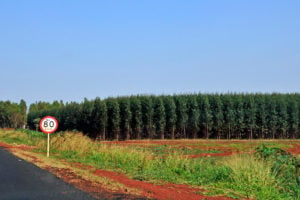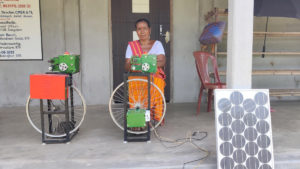Marking a key milestone in work towards a legally binding global treaty to end plastic pollution, the United Nations Environment Programme has released a ‘zero draft’ of the treaty text.
The draft is based on various proposals put forward by countries on what the treaty should contain, and was drafted by the Peruvian government in its capacity as chair of the intergovernmental negotiating committee (INC) for the treaty, with the support of the INC Secretariat.
It is intended to be used as the basis of negotiations at upcoming meetings of the INC, the next of which will be held in Nairobi, Kenya in November. At these sessions, governments will debate the precise language of the treaty, a process which will determine its scope, ambition and modes of operation.
“It’s a historic moment,” says Eirik Lindebjerg, global plastics policy lead at WWF. “The draft as it stands at least shows that it’s possible to attack a big, complex problem, and formulate concrete and specific regulations that would help us end plastic pollution.”
The zero draft is the latest development in a process that kicked off in March 2022, when the UN Environment Assembly adopted a resolution to develop a legally binding global treaty to end plastic pollution that addresses the full life cycle of plastics, from production to disposal.
What does the draft treaty say?
As the zero draft is an attempt to capture many, sometimes contradictory, perspectives from governments on the scope and specifics of a global plastics treaty, it contains multiple different ‘options’ for key elements.
For example, the section which relates to production of primary plastic polymers – that is, newly produced or ‘virgin’ plastics – presents three different options. The first would oblige countries to ensure that production stays below a binding target, to be specified in a future annex to the treaty. The second refers to an overall global target to manage and reduce production, along with nationally determined targets set by each country to contribute to this goal. The third refers only to nationally set targets to manage and reduce production.
“The zero draft captures some good, concrete measures that could actually make a difference, [down] to very vague, voluntary, non-binding, general formulations that wouldn’t take us anywhere closer to ending plastic pollution. That’s why it’s just a starting point for text negotiations,” says Lindebjerg.
“But the zero draft does create a path for discussion of global bans that are well structured and can be built on. That’s what makes me most optimistic.”
Other elements present in the zero draft for which multiple options are given include the use of particularly harmful chemicals in the production of plastics. Three options speak of obligations to “eliminate”, “minimize” or “regulate” use of such chemicals, respectively.
Similarly, in a section on “problematic and avoidable plastic products, including short-lived and single-use plastic products and intentionally added microplastics”, one option would oblige countries to “not allow” the production and sale of certain harmful products listed in a future annex. A less stringent second option would require countries to “take the necessary measures to regulate and reduce and, as appropriate, not allow” their production and sale.
“The zero draft does seem promising: it talks about reduction in the production of primary plastic, elimination of polymers and chemicals of concern and elimination of problematic, avoidable, and short-lived plastics,” says Priti Mahesh, chief programme officer at the NGO Toxics Link. “Transparency and traceability, very important elements which were emphasised by civil society groups during INC-2, have also found place in this draft. But it is all up to the countries to bring about an impactful treaty,” she says.
‘All options still on the table’
“At this point, the zero draft is more like a menu card of options which is wide open for negotiators to choose from, eliminate, combine or modify,” says Dharmesh Shah, an India-based senior campaigner at the Centre for International Environmental Law. “It is a good starting point and the onus is now on the parties to make it as ambitious as needed to address the scale of the plastics crisis.”
Like any negotiated compromise, it will be a mixed bagTim Grabiel, a senior lawyer at London-based NGO the Environmental Investigation Agency
“The zero draft has kept all options on the table, both positive and negative,” says Tim Grabiel, a senior lawyer at London-based NGO the Environmental Investigation Agency. “Hopefully we will have a successful outcome, but there are forces lining up to try and make this [treaty] weaker than required.” Grabiel mentions pushes by some countries to have contributions towards achieving the treaty’s goals decided solely at the national level. This, he said, would repeat a shortcoming of the Paris Agreement.
Grabiel highlights specific reference to fishing gear in the zero draft as a positive sign that the treaty will lead to targeted strategies to tackle this problem, estimated to be the single biggest source of plastic waste in the ocean. However, he flags agricultural plastics as a major source of plastic pollution not currently mentioned in the zero draft. These, he says, will require a dedicated, bespoke approach if their negative impacts are to be mitigated.
“Like any negotiated compromise, it will be a mixed bag, but we hope that on the most impactful measures, we will get some effective control measures, and not just leave those for national determination. But by and large, we very much welcome [the zero draft] – a lot of work was put into it.” The draft, Grabiel adds, accurately reflects the views of the parties at the most recent committee meeting, INC-2, held in Paris earlier this year.
What happens next with the global plastics treaty?
The zero draft is intended to form the basis of discussions at the upcoming INC-3 meeting in Kenya in November, and then INC-4 in Canada in around May 2024.
In between these meetings, intersessional work will be ongoing, likely including work on criteria for which chemicals and products should be included in annexes to the treaty, making them subject to particular restrictions or phase-out targets.
Throughout this phase, there will be debate between countries which are pushing for high ambitions with specific bans and phase-out targets, and those instead warning against going too far towards binding upstream controls on elements such as plastic production, harmful chemicals, and single-use plastics. Grabiel mentions the United States, Russia, Saudi Arabia and China as examples of the latter.
“But it very much depends on the issue,” he adds. “For example, China is a big proponent of a robust financial mechanism that provides consistent funding to developing countries.”
“Until now, the positions taken by India and China have not been very ambitious,” adds Priti Mahesh. “They have been vocal about bringing in downstream measures, such as managing waste, but have been largely silent or opposing any upstream measures.”
The process is supposed to conclude with a conference in mid 2025, at which country representatives would sign the new treaty.


